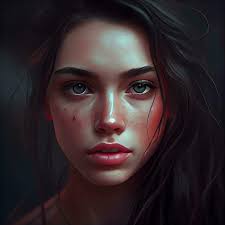
Introduction:
In the realm of photography, capturing a moment is an art in itself. However, the true magic often happens in the editing room, where skilled artists can transform a simple portrait into a timeless masterpiece. Fine art portrait editing is a delicate craft that involves not just technical prowess but a deep understanding of the subject’s essence. In this article, we will unravel the techniques behind fine art portrait editing, exploring the nuanced process that turns a photograph into a work of art.
Understanding Fine Art Portrait Editing:
Fine art portrait editing goes beyond mere retouching; it is about bringing forth the emotional and aesthetic depth of the subject. It involves a meticulous process of enhancing details, refining colors, and subtly manipulating elements to create a harmonious composition. The goal is not to alter reality but to reveal the authentic beauty that might be hidden beneath the surface.
The Art of Subtle Retouching:
Fine art portrait editing begins with the careful retouching of the subject. Unlike commercial retouching, which often focuses on removing imperfections, fine art editing aims to preserve the natural features while enhancing them subtly. This involves refining skin tones, smoothing textures, and accentuating details to achieve a balance between realism and artistic expression.
Color Grading and Mood Enhancement:
Colors play a pivotal role in setting the mood of a portrait. Fine art portrait editing involves meticulous color grading to evoke specific emotions. Artists carefully choose and manipulate colors to create a harmonious palette that complements the subject’s personality or the intended theme of the portrait. This step adds a layer of depth and sophistication to the final image.
Selective Focus and Composition:
In the world of fine art, every element in a portrait is a deliberate choice. Editing includes the careful adjustment of focus and composition to draw attention to the subject’s key features. This might involve subtle blurring of the background, emphasizing certain elements, or adjusting the overall balance of the composition to create a visually striking image.
Lighting Enhancement for Dramatic Effect:
Fine art portraits often rely on dramatic lighting to create a captivating atmosphere. In the editing phase, artists can enhance existing lighting or even introduce new lighting effects to add a touch of theatricality to the image. This careful manipulation of light contributes to the overall narrative and emotional impact of the portrait.
Texture and Fine Details:
One hallmark of fine art portrait editing is the meticulous attention to texture and fine details. This involves bringing out the subtle nuances in clothing, hair, and other elements that contribute to the overall richness of the image. By enhancing these details, artists can elevate the portrait to a level of realism and tactile presence that is truly captivating.
The Role of Digital Tools in Fine Art Portrait Editing:
Digital tools have revolutionized the world of photography and editing. In fine art portrait editing, software like Adobe Photoshop and Lightroom are invaluable. These tools provide artists with a vast array of options for adjusting colors, tones, and details, allowing for a level of precision and control that was once unimaginable. However, it is the artist’s skill and vision that ultimately define the success of the final piece.
Balancing Realism and Artistic Expression:
One of the challenges in fine art portrait editing is striking the right balance between realism and artistic expression. While the goal is to create a visually stunning image, it is crucial to ensure that the essence of the subject remains authentic. Overly stylized or heavily manipulated portraits may lose the connection with the subject, diminishing the emotional impact of the artwork.
Conclusion:
Fine art portrait editing is a nuanced and intricate process that transforms a simple photograph into a profound work of art. From subtle retouching to careful color grading and composition adjustments, every step contributes to the creation of a portrait that transcends the boundaries of mere representation. As digital tools continue to evolve, so too does the potential for artists to push the boundaries of creativity in the realm of fine art portrait editing. It is a captivating journey that bridges the technical with the artistic, resulting in portraits that speak volumes about both the subject and the skill of the artist.
In conclusion, mastering the art of fine art portrait editing requires a deep understanding of both technical aspects and artistic vision. The delicate balance between realism and expression, coupled with meticulous attention to details, makes this process a true form of artistry. As photographers and digital artists continue to explore the possibilities offered by evolving technologies, the world of fine art portrait editing will undoubtedly witness further innovation and creativity in the pursuit of capturing the true essence of every subject.
